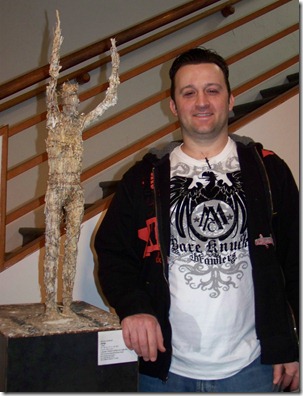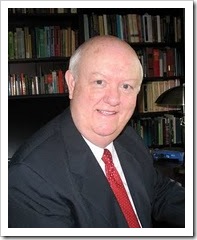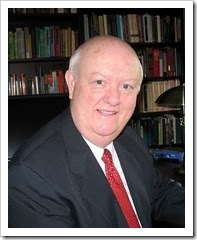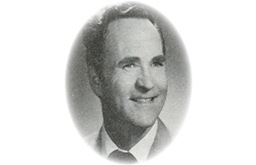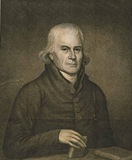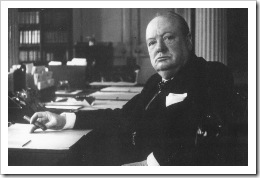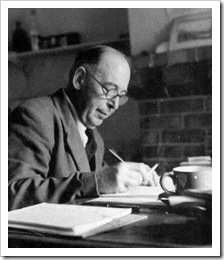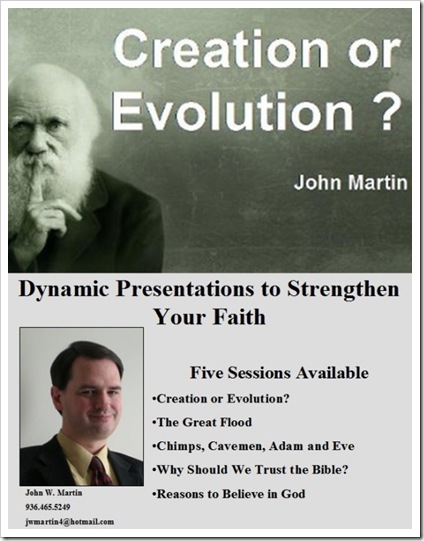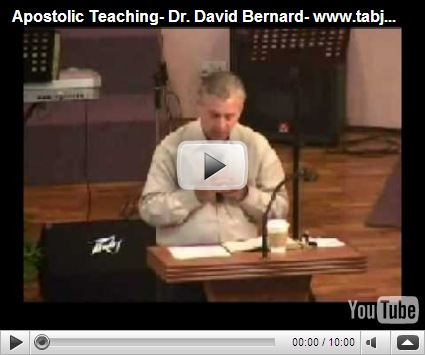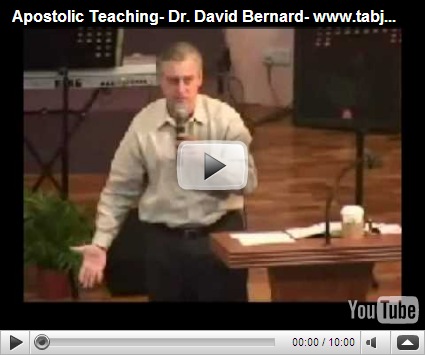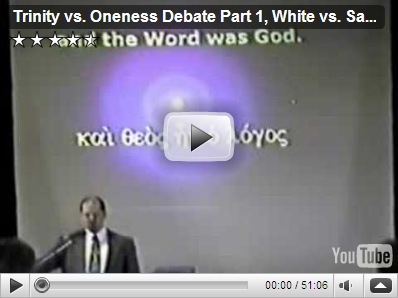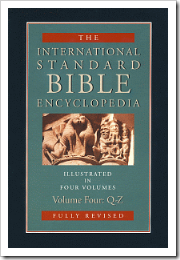“The empty tomb, then, forms a veritable rock on which all rationalistic theories of the resurrection dash themselves in vain.” ~J.N.D. Anderson, Evidence for The Resurrection
While reading C. S. Lewis & Francis Schaeffer: Lessons for a New Century recently I came across this analogy that is fitting for this discussion. Note what Scott Burson and Jerry Walls suggests here:
“What would you say if you picked up the newspaper tomorrow morning and the lead headline screamed, “Bones of Jesus Found: Scholars Refute Resurrection”? Your first reaction might likely be grave skepticism and a quick glance through the body of the story to identify the names of these radical revisionists. But suppose upon reading the opening paragraph you discovered that the academicians who made this pronouncement are not of the Jesus Seminar variety but rather a battery of the most respected evangelical New Testament scholars in the world. The article indicates that these venerable professors had secretly gathered at an archaeological site in Jerusalem to examine a new find and that the whole group, much to their chagrin, concluded that these were the actual bones of Jesus of Nazareth. In light of this startling revelation, would you give up your Christian faith?”
Some of you may have never considered this and yet others may have. However, as difficult as it may be to unpack the implications here we must find ourselves agreeing with Paul. In his first letter to the Corinthians Paul writes:
If there is no resurrection of the dead, then Christ has not been raised; and if Christ has not been raised, then our proclamation has been in vain and your faith has been in vain. (1 Corinthians 15:13-14 NRSV)
Unlike many faiths today Christianity is rooted in space-time history and is open to both verification and falsification. The bodily Resurrection of Christ, from the dead, is a pillar of the Christian faith. No other person has been able to achieve such a feat. In fact, it is this divine feat that enables us to rightly identify Jesus as God. If Jesus did not rise from the dead then He is not God, and was only a good man, a miracle worker from Nazareth. If Jesus did not rise from the dead our sin remains.
Paul tells us that we preach Christ in vain if He “has not been raised”. This belief in a Christ that was resurrected from the dead was new. The disciples did not adopt some Jewish belief. Plato and Judaism believed in some sort of after-life where our bodies would be changed; however, Christ was resurrected from the dead in actual time and space—before the end of time—and He was later seen by many eyewitnesses.
The implications of this will not be fully explored here but they should awe us and increase our faith. As believers Christ abolished the limitations, at least those we perceived, of space and time and therefore the significance of Jesus Christ cannot be measured.
Trends of the Resurrection:
Beliefs on the Resurrection have changed over time. Many philosophical trends have come and gone as well (e.g Hegelianism is almost gone from Germany). G.K. Chesterson, in Orthodoxy, noted that “the man of the nineteenth century did not disbelieve in the Resurrection because his liberal Christianity allowed him to doubt it. He disbelieved in it because his very strict materialism did not allow him to believe it.” Today, there are liberals who believe in the Resurrection yet would suggest it was a spiritual or non-physical resurrection (Wolfhart Pannenberg, Marcus Borg). Gnosticism and Jehovah’s Witness would also support a spiritual resurrection.
Rudolf Bultmann, believed that the historical resurrection could never be proved, believed the essence of the resurrection is that Christ is raised in our hearts, not that He was raised physically from the dead. N.T. Wright notes that Bultmann believed “the resurrection-language of the early church was used to denote not a separate event from the crucifixion but the early disciples’ faith that the crucifixion was not a tragic defeat but the divine act of salvation. Easter is thus about the arising, not of Jesus, but of the faith of the early church.”[1] The Resurrection however is more than just subjective visions by 1st Century followers of Christ.
As atheism is increasingly defining and organizing itself, as a relatively recent philosophy, materialistic and naturalist impulses are also growing. This is a war for the minds of men today. Many are committed to a naturalistic, even Darwinian, worldview that does not allow for miracles. Darwinian evolution has laid a foundation upon which the naturalist builds their worldview. To the naturalist, who rejects supernaturalism, there is no transcendent God since there is nothing outside the natural world and therefore if Jesus did rise bodily from the dead then He was indeed God.
We should not be surprised by similar stories found in the mythological tales of different cultures and time periods. Just as with the near east creation and flood stories we should expect to find them for in someway they echo or are derivative of the events in Genesis, which in reality transcend such stories. In his, Reflections on the Psalms, C.S. Lewis noted that the monotheistic writings of Egyptian Pharaoh Akhenaten anticipate the poetry of the Psalms. The rising and dying kings of the eastern mystery religions could also anticipate the death and resurrection of Christ. Although they are not exact parallels they could point to a spiritual resonance with what was to come.
Proofs of the Resurrection:
“The appearances of Jesus and His resurrection are as well authenticated as anything in ancient literature…there can be no doubt that they occurred, and that the main reason why Christians became sure of the resurrection in the earliest days was just this. They could say with assurance, “We have seen the Lord.” They knew it was he!”
~British theologian Michael Green
Here is a quick list of proofs for the Resurrection:
- The empty tomb.
- Sudden transformation of frightened and uncertain disciples into bold proponents of the Resurrection for which they would die.
- The claim that the church was the Body of Christ.
- The transformation of the Christ-hater Saul, to the Christ-lover Paul.
- A hermeneutical conviction by the early church which correlated the death, burial and resurrection of Christ with Old Testament Messianic references.
- The inability of the Jewish leaders to disprove the Resurrection event.
- The use of Sunday or worship on the “first day” instead of the Sabbath.
- The conversion of James, the brother of Christ, who originally opposed the teachings of his brother.
- This A.D. 117 account by Ignatius of Antioch to the Smyrneans:
“For I know that after His resurrection also He was still possessed of flesh, and I believe that He is so now. When, for instance, He came to those who were with Peter, He said to them, “Lay hold, handle Me, and see that I am not an incorporeal spirit.” And immediately they touched Him, and believed, being convinced both by His flesh and spirit. For this cause also they despised death, and were found its conquerors. And after his resurrection He did eat and drink with them, as being possessed of flesh, although spiritually He was united to the Father.” Ch. III
- The theme of the Resurrection of Christ and the believer’s future resurrection are interwoven throughout the New Testament.
- Non-Christian historical sources such as Josephus, Tacitus, Lucian, Mara Bar-Serapion and the Talmud all confirm the crucifixion of Jesus.
- The Romans were very good at what they did. There are many appearances and eyewitness of Christ after the crucifixion being resurrected from the dead. (See Matthew 28:8-10, 16-20; Luke 24:13; John 20:11-29 and Acts 1:1-11).
- The Shroud of Turin and the Sudarium. These are centuries old burial cloths which bear the image of a crucified man. Advocates for the Shroud of Turin believe it to be the burial shroud of Christ. Many have declared it to be a medieval forgery (dating to 1350) but others assert its authenticity. The debate continues to this day.
- These proofs are not without their critics but this post is not designed to be exhaustive. Therefore I have not endeavored to present argument for or against any of these arguments. I can do so at a later time or in future comments. You can also see my other articles on the Resurrection here.
The Results of the Resurrection:
Some may say, “So what?” Others may ask how does the Resurrection event relate to me today? First, the Resurrection gives us eternal life. A hope for a future beyond this finite world. Jesus told Martha, “I am the resurrection and the life. Those who believe in me, even though they die, will live, and everyone who lives and believes in me will never die.” John 11:25-26 NRSV
Second, there is an impartation of power. Paul writing to the church at Ephesus, “and what is the immeasurable greatness of his power for us who believe, according to the working of his great power. God put this power to work in Christ when he raised him from the dead and seated him at his right hand in the heavenly places.” Ephesians 1:19-20 NRSV
Third, the Resurrection of Christ brought about the reality of Justification for believers. Paul, again, states: “It will be reckoned to us who believe in him who raised Jesus our Lord from the dead, who was handed over to death for our trespasses and was raised for our justification.” Romans 4:24-25 NRSV
The fourth result is perhaps one of the most important. The Resurrection of Christ provides us with a future hope of resurrection. Clement of Rome (A.D. 30-101) speaks of this hope and calls it the “future resurrection” in The First Epistle of Clement. Prior to the comments by Clement the Apostle Paul would tell the Corinthians:
If Christ has not been raised, your faith is futile and you are still in your sins. Then those also who have died in Christ have perished. If for this life only we have hoped in Christ, we are of all people most to be pitied. But in fact Christ has been raised from the dead, the first fruits of those who have died. For since death came through a human being, the resurrection of the dead has also come through a human being; for as all die in Adam, so all will be made alive in Christ. 1 Corinthians 15:17-22 NRSV
Fifth, Paul also reminds us of our union with Christ. He says that Christ has “raised us up with him and seated us with him in the heavenly places in Christ Jesus.” Ephesians 2:6 NRSV Therefore since we are united with Christ we will also be raised as Christ.
The Significance of the Resurrection:
First, the Resurrection of Christ signified the beginning of the Last Days and the Final Resurrection. Jesus came preaching the Kingdom of God. The coming of the Kingdom brings stark reality to the fact that God is about to intervene in time and space. To judge the righteous and the wicked.
The time following the Resurrection event is one leading to all believers glorification and immortality in the resurrected life (See 1 Corinthians 15:50-56). In his letter to the church at Colossae Paul reminded them that Jesus was the “first born from the dead” (Colossians 1:18). Thankfully this means he is only one, or the first, of many to come.
Second, the Resurrection of Christ was the vindication of the message and mission of Jesus, the Christ. Since Christ was raised from the dead his claims are true and His message of salvation is authentic. This, then, means something very important and powerful. By His Resurrection Christ has defeated Satan, sin and has overcome death. Jesus is Lord of our salvation but is also the victor. He has put the forces of evil under Him.
It is obvious that Jesus understood Himself as being the atonement for humanity. It was the atoning sacrifice for the sins of man, which reversed the deadly effects of Adam in the Garden of Eden. In the Garden Eve was tempted by Satan and as disobeyed God resulting in The Fall. Jesus essentially began the restorative process of God’s creation. He was “God with us” reconciling the world to Himself.
The Assurance of Salvation:
Finally, the resurrection is eternally significant because it brings us the assurance of our salvation (See Acts 17:31). Donald Bloesch noted,
“The New Testament does give us evidences of Jesus’ resurrection, among which are the empty tomb and the appearance of Jesus to his disciples after his death. Yet these are not proofs that can compel reason, because they leave too many unanswered questions. They are evidences, however, that ratify faith.” [2]
Bloesch firmly believes in the historical bodily Resurrection of Christ. He sees the New Testament evidence as ratifying our faith yet they are not rationally certain. Historical analysis can give us approximations. For example, in Science measurements are not exact. The last digit of a measurement is always estimated or sometimes rounded off. This does not mean the measurements are invalid or inaccurate but rather they are not exact.
In his Pensees mathematician Blaise Pascal notes,
“This religion, so great in miracles…so great in science, after having displayed all her miracles and all her wisdom, rejects all this, and declares that she has neither wisdom nor signs, but only the cross and foolishness.” He goes on to say, “for those, who, by these signs and that wisdom, have deserved your belief, and who have proved to you their character, declare to you that nothing of all this can change you, and render you capable of knowing and loving God, but the power of the foolishness of the cross without wisdom and signs, and not the signs without this power.” (Pensees, 586-587)
In other words the Christian faith has many evidences in its support, but it is not these evidences that cause us to believe. Bloesch goes on to say,
“the empty tomb is a sign of the reality of Jesus’ resurrection, but divine revelation alone is the cause of our acceptance of belief in this resurrection. The women at the tomb of Jesus believed not because they saw a tomb that was empty but because an angel appeared to them and announced Jesus’ resurrection (Mt 28:1–7; Mk 16:5–6).”
A similar account is true with Paul. Even though Paul knew many of the disciples and eyewitnesses of the Resurrected Christ he became convinced by his personal encounter with Christ where he actually heard the voice of the Lord (See Acts 9 and 22). This is probably why Paul would later pen these words under divine inspiration:
“So faith comes from what is heard, and what is heard comes through the word of Christ.”
Epistle of Paul to the Church at Rome 10:17 NRSVJN Anderson
NOTES:
[1] http://www.ntwrightpage.com/Wright_Historical_Problem.htm
[2]Donald G. Bloesch, The Last Things : Resurrection, Judgment, Glory (Downers Grove, Ill.: InterVarsity Press, 2004), 1.







